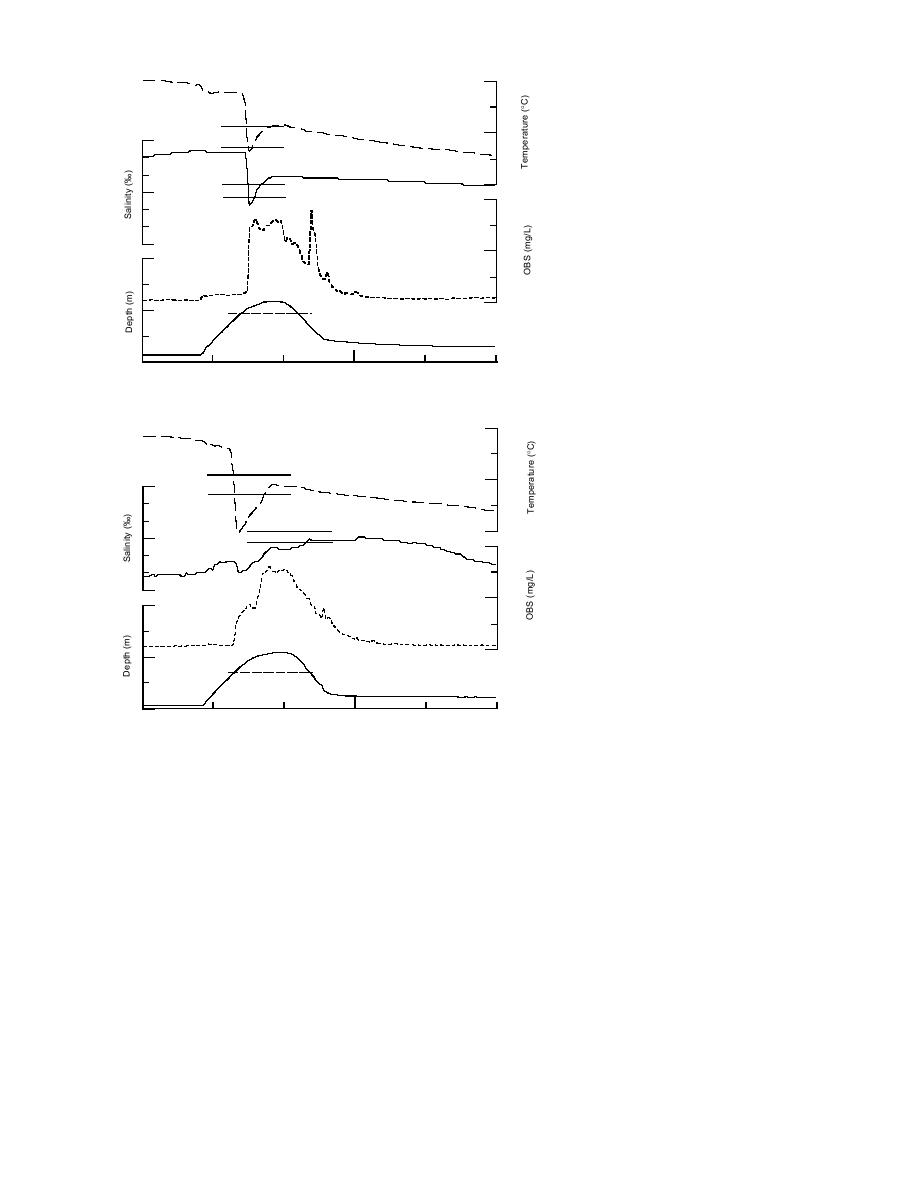
Otter gullies. Otter Creek often re-
14
ceives backed-up water from the Eagle
River, but during the highest tidal
12
events, Knik Arm waters penetrate
Knik
9
Temp.
even to this most southern part of the
Flats, as will be discussed later.
10
Knik
6
Salinity
1000
Source waters
The characteristic signature of Knik
Arm water varies through the season
3
500
4
as air temperature and discharge from
glacial meltwater in the Eagle River
and in the rivers draining Knik Arm
0
2
change (Table 11). Knik Arm water
Flooding depth
temperature reflects the seasonal rise
and fall in air temperature. During
0
May and October flooding events,
18:00
00:00 (hr)
7 Sept 1994
8 Sept 1994
temperatures were in a similar range
(89C), higher in September (11
a. Mortar Gully
12C), and lower in November (about
14
1994
1C). Salinity was highest in May (15
16 ppt) prior to the start of the glacial
meltwater season, lowest in Septem-
12
Knik
9
Temp.
ber when glacial discharge had a large
influence (56 ppt), and increased
10
gradually during October (810 ppt)
6
Knik
2000
Salinity
and November (1113 ppt) as the dis-
charges from rivers decreased.
The Eagle River is the primary in-
3
1000
coming freshwater surface source for
4
the Flats, with both glacial and sea-
sonal changes (Table 12, see Fig. 36).
0
While salinity, i.e., specific conduc-
2
tance, remains at near-zero (0.1 ppt)
Flooding Depth
throughout the season, changing spe-
0
cific conductance levels document the
18:00
00:00 (hr)
7 Sept 1994
8 Sept 1994
relative influences of glacial sources.
b. B-Gully
Higher conductance levels occur dur-
Figure 32. Variation in water quality parameters at two gully loca- ing early and late season when the
ground water and local runoff com-
tions during 78 September flooding cycle.
ponents are greater than the glacial
input, and solute concentrations in the
ing water. When the water crests over the gully
glacial outflow are not diluted by meltwater
headwall (flooding depth mark), temperature and
(Sharp et al. 1995). Daily undulations in the spe-
salinity change rapidly to values characteristic of
cific conductance and temperature curves in mid-
the arriving flood water--either tidal, riverine or
summer mark the diurnal meltwater discharge
a mixture. During ebb, the parameters gradually
variations from the Eagle Glacier.
change to levels that are, first, a mixture of flood
waters, to one with more local water characteris-
Coastal sites
tics. Knik Arm waters are generally the dominant
The two coastal sites where flood and ebb are
incoming water mass in the Mortar (Fig. 32a),
controlled by Knik Arm must be treated sepa-
Spring, Bread Truck and Tanker gullies. A more
rately, since the Mortar Gully drains ponds in Area
complex mixture of both riverine and Knik Arm
D, and Spring Gully is fed by an upland spring
waters occurs in the Parachute, B (Fig. 32b) and
and the northwestern-most section of Area A.
28



 Previous Page
Previous Page
